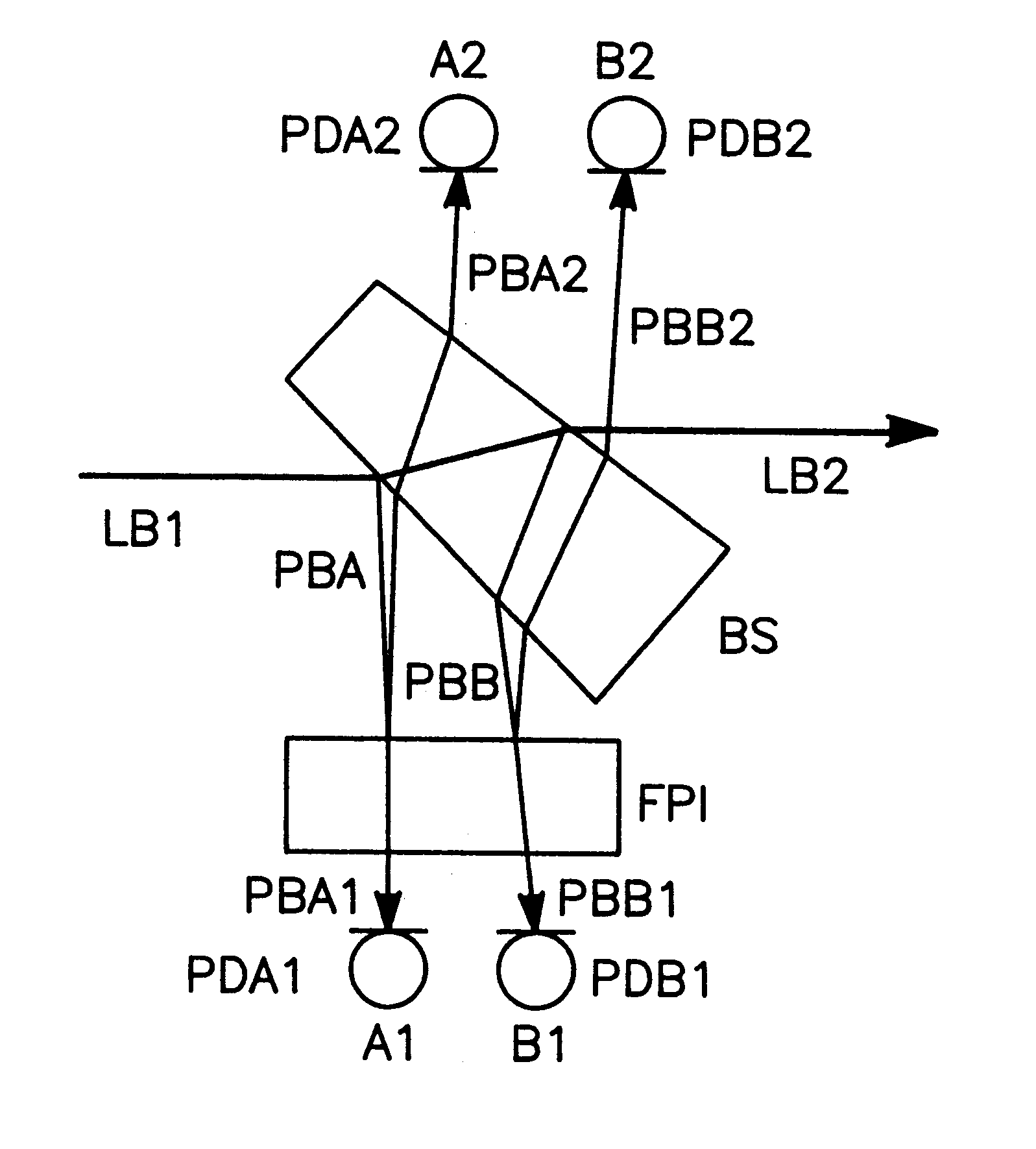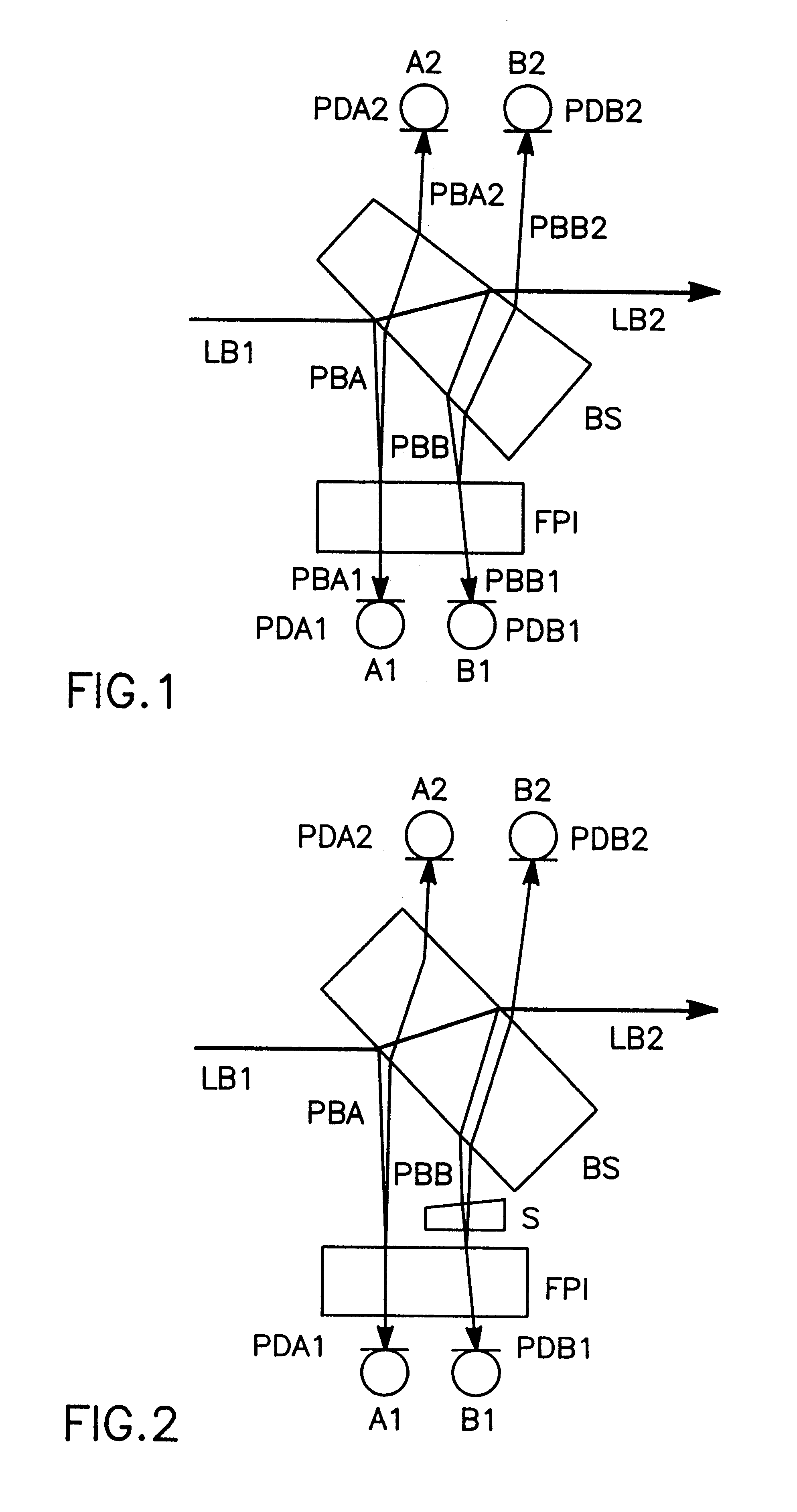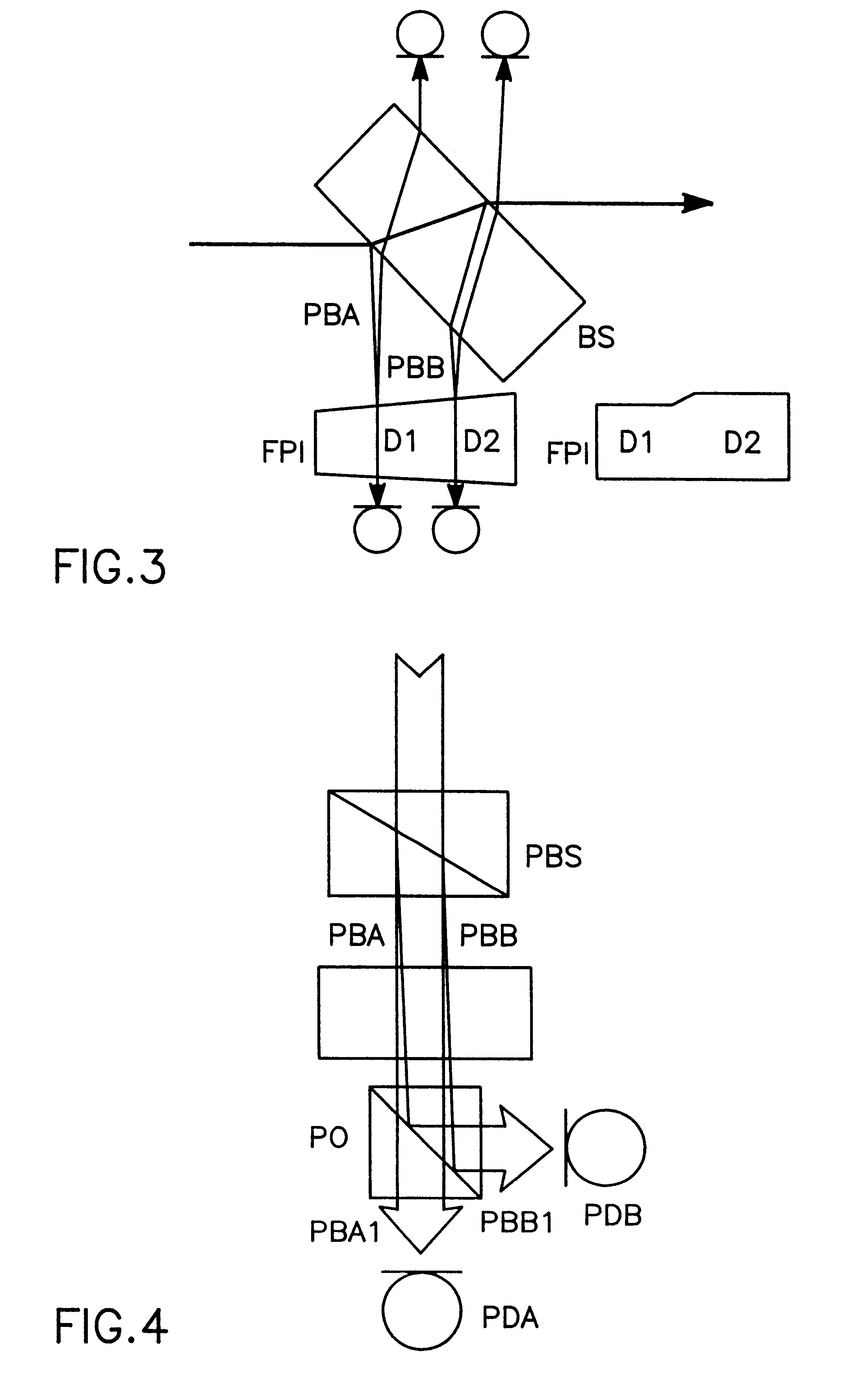Method and device for measuring and stabilization using signals from a Fabry-Perot
a technology of fabryperot and signal, which is applied in the direction of instruments, electrical equipment, lasers, etc., can solve the problems of high system cost, high optical structure cost, and possible misinterpretation of signals in signal analysis, and achieve low cost, compact structure, and simple structure
- Summary
- Abstract
- Description
- Claims
- Application Information
AI Technical Summary
Benefits of technology
Problems solved by technology
Method used
Image
Examples
Embodiment Construction
FIG. 1 illustrates a system for realizing the inventive method. The incident laser beam LB1 strikes on a beam splitter BS. The latter is preferably a non-coated glass substrate because for the measuring method only a fraction of the laser radiation is sufficient and a majority of the laser power should still be available in the emerging beam LB2 for the intended application proper. The component PBA reflected from the front surface of the beam splitter now passes through a low finesse etalon FPI. The component beam PBA2 reflected by the etalon is detected by the photodiode PDA2 and converted into the electrical signal A2. This signal has a frequency-dependent profile with a high contrast ratio, however it is proportional to the intensity. The beam PBA1 transmitted by the etalon is converted into the signal A1 by the photodiode PDA1. Then a frequency-independent signal IA proportional to the intensity can be generated from an appropriate electronic summation of the signals A1 and A2,...
PUM
 Login to View More
Login to View More Abstract
Description
Claims
Application Information
 Login to View More
Login to View More - R&D
- Intellectual Property
- Life Sciences
- Materials
- Tech Scout
- Unparalleled Data Quality
- Higher Quality Content
- 60% Fewer Hallucinations
Browse by: Latest US Patents, China's latest patents, Technical Efficacy Thesaurus, Application Domain, Technology Topic, Popular Technical Reports.
© 2025 PatSnap. All rights reserved.Legal|Privacy policy|Modern Slavery Act Transparency Statement|Sitemap|About US| Contact US: help@patsnap.com



